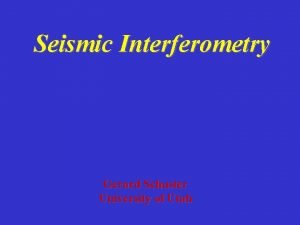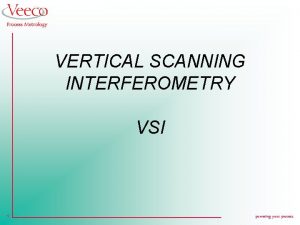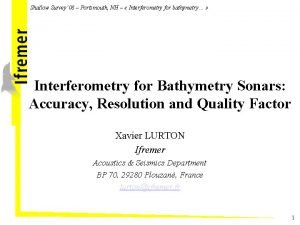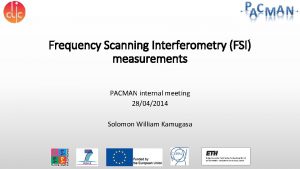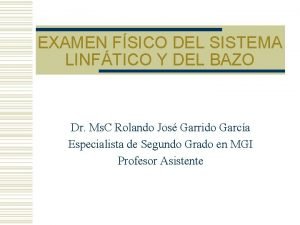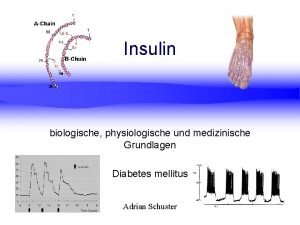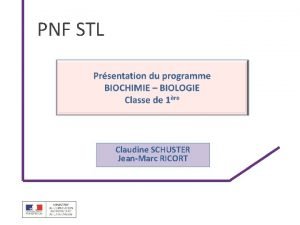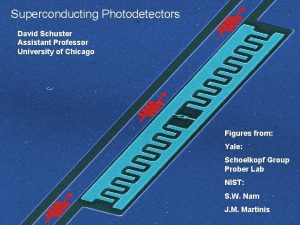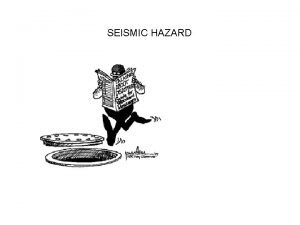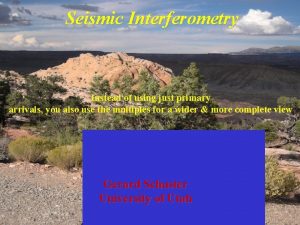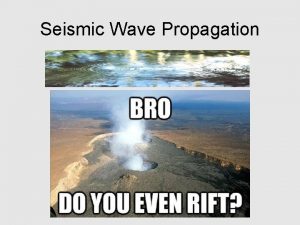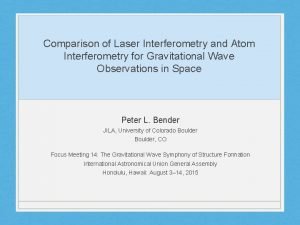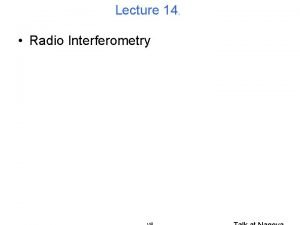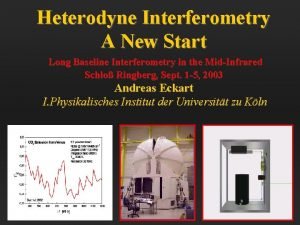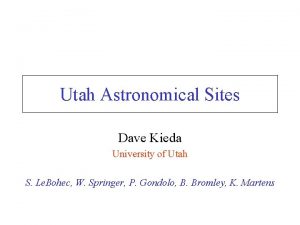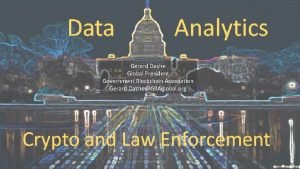Seismic Interferometry Gerard Schuster University of Utah Instead















- Slides: 15

Seismic Interferometry Gerard Schuster University of Utah

Instead of using just primary arrivals, you also use the multiples for a wider view

Overview of Seismic Interferomtery Short Course Primary reflections Multiple reflections Small vs Huge Illumination Instead of using just primary arrivals, you also use the multiples for a wider vision

Overview of Seismic Interferomtery Short Course Redatum sources below overburden Local VSP migration Instead of using just primary clearer arrivals, you also use the multiples for a wider vision

Overview of Seismic Interferomtery Short Course Data Extrapolation Instead of using just primary clearer arrivals, you also use the multiples for a wider vision

Overview of Seismic Interferomtery Short Course Hydrofrac location Monitoring 4 D Instead of using just primary clearer arrivals, you also use the multiples for a wider vision

Goal: Learn Principles and Algorithms in Seismic Interferometry Format Mornings: Lecture 50 minutes, followed by exercise or MATLAB lab. Format Afternoon: MATLAB labs+discussion. Topics: Deterministic interferometry, stochastic interferometry, 3 x 3 classification matrix, reciprocity theorems, applications to VSP, SSP, OBS, and Xwell data.

What is Seismic Interferometry? Answer: Correlation and summation of trace pairs and stacking the result for different shot positions iwtx. B e G(B|x)* iw(tx. B+ t. B+z tz)B e G(B|x) = iw( t. B+z tz. B ) = e G(B|B) Point Source Response with src at B and rec at B VSP => SSP B B direct z reflection A x G(A|B) Phase of Common Raypath Cancels Assume a VSP experiment

What is Seismic Interferometry? Answer: Correlation and summation of trace pairs and stacking the result for different shot positions - iwtx. B x e G(B|x)** iw(tx. B+ t. B+z tz)B e G(B|x) = iw( t. B+z tz. B ) = e G(B|B) Point Source Response with src at A and rec at B VSP => SSP B B direct z x x reflection G(A|B) A Phase of Common Raypath Cancels

What is Seismic Interferometry? Answer: Correlation and summation of trace pairs and stacking the result for different shot positions iwtx. B x e G(B|x)* iw(tx. B+ t. B+z tz)B e G(B|x) = iw( t. B+z tz. B ) = e G(B|B) Point Source Response with src at A and rec at B VSP => SSP B B direct z x x reflection G(A|B) A Phase of Common Raypath Cancels Do Not Need to Know Source Location! No Need to know Source Initiation Time!

Reciprocity Correlation Equation 2 D Reflection Data x k A) = G(x|B)* G(x| SSP VSP B G(A|B) B A A x x A Old Multiples Become New Primaries! Phase of Common Raypath Cancels

Standard VSP vs Interferometric VSP Imaging Standard VSP Imaging Interferometric VSP Imaging Primary reflections Multiple reflections Small vs Huge Illumination Instead of using just primary arrivals, you also use the multiples for a wider vision

Interferometry Applications 1. VSP -> SSP : Small vs Huge Illumination 2. VSP -> SWP : Redatum sources below overburden Local VSP migration

Interferometry Applications 3. SSP -> SSP : Interpolation 4. OBS-> OBS : Extrapolation 5. Source estimation

Interferometry Applications 6. Passive Imaging: Monitoring 4 D 7. Source Location Monitoring EOR
 Gerard schuster
Gerard schuster Type of machine learning models
Type of machine learning models Vertical scanning interferometry
Vertical scanning interferometry Interferometry
Interferometry Octet bli
Octet bli Frequency scanning interferometry
Frequency scanning interferometry Delivering the nuclear promise
Delivering the nuclear promise Posicion de schuster bazo
Posicion de schuster bazo Frank peter schuster
Frank peter schuster Adrian schuster
Adrian schuster Jean marc ricort
Jean marc ricort David schuster uchicago
David schuster uchicago Elina schuster
Elina schuster Umverteilung
Umverteilung Uupm university of utah
Uupm university of utah Utah ombudsman
Utah ombudsman
